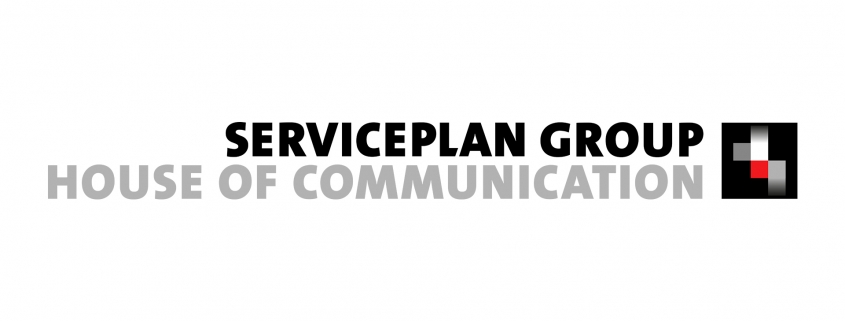- The most relevant SEO News for February 2020 - 26. February 2020
- The most relevant SEO News for January 2020 - 21. January 2020
- The most relevant SEO News for December 2019 - 23. December 2019
- The most relevant SEO News for November 2019 - 25. November 2019
- Don’t be afraid of Google’s BERT - 31. October 2019
- The most relevant SEO News for October 2019 - 31. October 2019
- The most relevant SEO News for September 2019 - 25. September 2019
As Christmas trade slowly gathers pace, this year too it’s mainly prettily wrapped electronics that we can expect to see under German Christmas trees. November’s instalment of SEO News examines why we should keep a critical mind when it comes to technology, and also considers the possibility of Google’s homepage relaunch going awry.
Google is becoming a long quiet river
So, it’s finally happened. The last 20 years have seen Google not only set the standard for web-based search engines, but also lead the way with the minimalism and efficiency of its homepage design. During the Internet boom of the early naughties, Google’s simple search field with just its logo – or doodle – and two buttons underneath was the welcome antithesis of labyrinthine jumbles of links and tedious Flash intros. Much has happened since 1998, however, and the market leader from Mountain View is now finally bowing to the trend for constant and personalised stimulation. “Discover feed” is the name of a new feature which has been in the process of a progressive worldwide roll-out on desktop and mobile devices, including search apps, since the end of October. The first of several new functions announced by Google to celebrate its 20th birthday, Discover feed marks the first step towards an individualised response engine that delivers results without even needing to be asked questions (see our report). Although Google has experimented in the past with new homepage features that allow users to enter into popular subject areas, and with its assistant service “Now”, this is the first time that relevant content in the context of personal search histories is being presented in endless stream form. And, just like on YouTube, the whole experience is also available in a Night Mode which comes in special muted colours.
This design overhaul – the most comprehensive since Google’s very beginnings – has clearly been a difficult step for the decision-makers in Mountain View, even though the competition at Microsoft have taken a different visual tack from the start with their search engine Bing. With a striking new image to greet visitors to its homepage every day and the latest news, Bing has always provided more points of entry for its users than the market leader. It’s also interesting to compare Google with Amazon: for the Seattle-based retail search engine, content personalisation is the obvious starting point when it comes to homepage design. Perpetual upsell with the help of the A9 algorithm means that users are presented with countless individually-tailored offers. On the other hand, recent integration of increasing numbers of new features and placements has resulted in user experience and usability of design suffering significantly. The consequence seems to be that Amazon’s homepage design is devolving back into the confusing times of fragmented front page websites. Neither does user experience appear to be too great a sacrifice as long as takings are good. And for Google too, integrating paid ads into the Discover stream is naturally providing new forms of monetisation.
That said, the homepage itself may ultimately turn out to be a doomed model. Voice and visual search capabilities are now providing countless touchpoints for search engines, which may soon enough ditch classic web or app-based presentation formats to offer users a tailor-made answers and solutions package in their place. Until that time comes, SEOs will need to wait and see whether the new Google stream gains acceptance among its users, and what criteria Google’s Discover feed uses to generate its responses. This new, larger stage certainly shouldn’t go unused.
Led around by the nose
Technological progress is a function of modernity – it’s both its cause and its consequence. One of the clearest examples of just how deeply technology has embedded itself into our lives is the phenomenon of the search engine. Whether it’s Google’s vision of an invisible companion for the challenges of the unplannable outside world, or Amazon’s promise of immediate consumer satisfaction, neither project would be conceivable without the technology that functions as its beating heart. It was no different with the steam engine or with internal combustion. The difference is that the machinery driving the present chapter of modernisation is far harder to see inside. If the new diesel generator was something that you could take apart with your own hands, the same can hardly be said of algorithms and artificial intelligence, which exist only in distant clouds of data. And sometimes it’s difficult to shake the impression that the bombastic promises and visions of the high-tech industry are little more than a glitzy marketing show for a helplessly naive public.
This is why it’s always reassuring to catch the technological elite showing a more fallible side. To this end, the SEO Signals Lab Group announced a competition which challenged contestants to achieve a high ranking among responses to the search term “Rhinoplasty Plano” within the space of 30 days. The term was one that users might enter in order to locate plastic surgeons in the greater Dallas area of Texas who specialise in sculpting noses. This was a query that had not formerly been the subject of a great deal of competition, and which had high local relevance. The small-scale challenge delivered some unexpected results, however. Google’s mantra for success in organic searches can be broken down into three key points: relevant content, a friendly user experience, and clean technical compatibility with all platforms. That’s why it’s more than surprising that the winning website of the Signals Lab competition is written entirely in Latin – right down to its URLs, headings and footers. The use of Latin dummy text in website production is nothing unusual; in this case, however, the ancient language wasn’t just found in a forgotten placeholder for content in production, but throughout the site, as part of a strategy to reveal the fallibility of search engine algorithms. On top of that, the website was also packed with made-up local information, forged reviews, and substandard backlinks. That Google allowed what is clearly a fake website to rank second among responses to the search term in question can only be explained either as an anomaly, or as a blind spot in the omniscient Googleverse.
Two lessons can be taken away from this little experiment. The first is that it’s a comfort for the search engine sector to know that, even with the supposedly mature level of its technology, Google can still be caught out with classic old-school fake spam SEO. The second is that users need to stay vigilant, and try to establish how far they can trust technological progress before letting themselves get swept up in all the excitement. Although search engines are certainly extremely practical, they will never become part of human reality. Whether it’s Google or Bing, at the end of the day, search engines are no more than database-supported ways of selling advertising which offer a compact and free version of real life to tempt users in. By the way: if you’re looking for Latin-speaking surgeons to operate on your nose, apparently Florida has what you need as well.
This page is available in DE







Thanks for interesting recommendations.